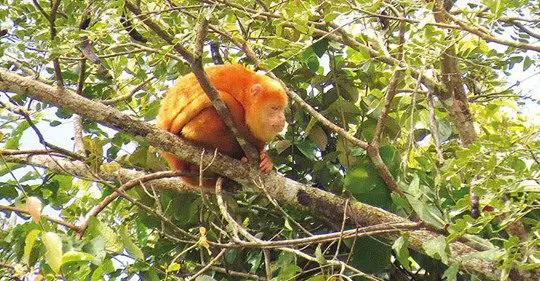After an analysis of the sightings, Gustavo Gutiérrez Espeleta, professor and researcher at the School of Biology of the University of Costa Rica (UCR), determined that all the cases reported so far came from the same areas of the country: Sarapiquí, San Carlos, and Limón. The researcher established a relation of the places of sighting with the presence of mono-cultivations and attributed to this a possible cause of the strange pattern.
The research was joined by Ismael Galván, a specialist in pigmentation of the Doñana Biological Station, a center of the Spanish National Research Council (CSIC).
Galván analyzed the proteins present in samples of brown and yellow hair from one of the primates. This process was carried out in Spain, due to the fact that our country does not have pigmentation experts or the necessary equipment to carry out the study.
The scientist detected a molecular change in the pigmentation of monkeys’

The researchers suggest that environmental pollution from a sulfur-rich agrochemical used in monoculture zones could be the cause of this phenomenon. However, to prove it, it is still necessary to carry out more studies.
Currently, there are 23 monkeys identified with yellow spots on their body, all howlers. The most recent individual was located in Monteverde, Puntarenas, where there are no mono-cultivations.
This finding incorporates a very important element. The researchers handle 2 hypotheses. The first states that sulfur is impregnated in monkeys near cultivation areas, and then these individuals move to other places. The other one suggests that these sulfides travel through the wind and lodge in the leaves and tender stems of the trees from which these primates drink and feed.
In spite of not having definitive tests that relate the change of color in the coat with a harmful effect on the health of the specimens, according to experts, the new coloration makes them more visible to predators, so that their survival would be at risk.
However, the study provided enough scientific evidence to launch the environmental warning about the impact of the population of howler monkeys, although there are still procedures to be carried out to consolidate the findings of the biologists that also allow establishing the mutation that primate populations would be experiencing in the northern area of our country.
The UCR biologists hope to have more funding to continue the analysis of more individuals in different regions of the country.

